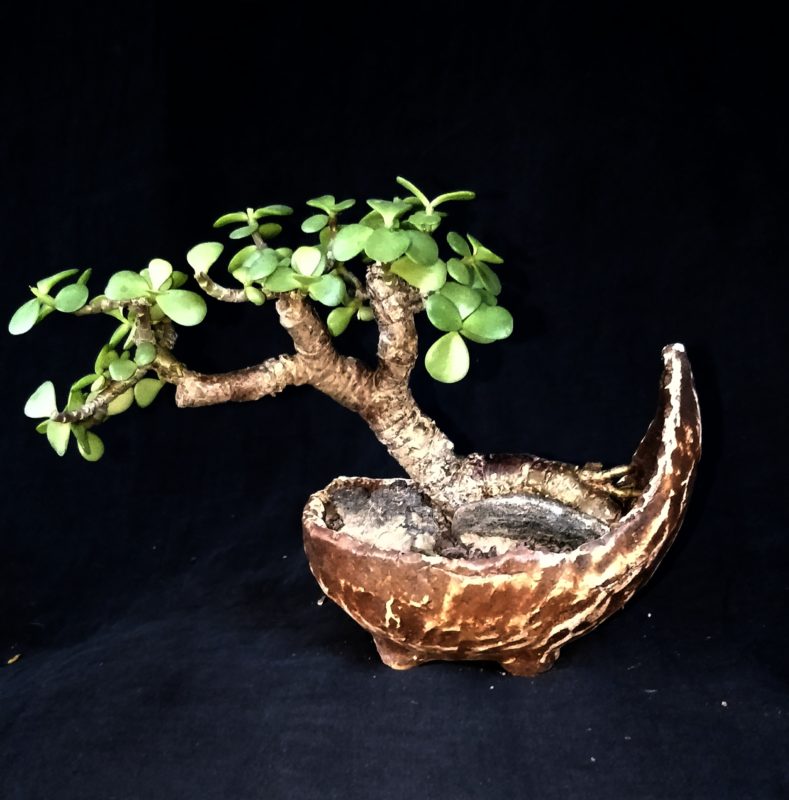Kusamono
Kusamono (literally “grass thing”) and shitakusa (literally “undergrass”) are a potted collection of plants designed to be viewed either in accompaniment with bonsai or alone. Normally, the term kusamono is used when the planting is displayed as the center of attention, while the term shitakusa is used for plantings that accompany bonsai displays. In contrast to underplantings (which are potted in with the bonsai), kusamono and shitakusa are displayed separately in special pots, driftwood, or even stones.
Plants used are typically moss, grass, lichen, small flowers, bamboo or bulbs, that may heighten the beauty or reflect a certain season. While traditionally in Japan, plants gathered from mountains contributed to the bulk of companion plantings, modern use has extended to more creative and artistic design.
Kusamono refers to a Japanese botanical art that developed alongside bonsai. More recently, creating Kusamono has developed into an art form of its own. A well-chosen kusamono reflects the season in which it is displayed. Some compositions are designed to include plants that will look good in several seasons. Besides the season, a Kusamono should suggest a specific natural habitat—such as a wetland, meadow or woodland. Whether using a single plant or a group of plants, there are three basic styles of planting: moss-ball, out-of-pot, or in a container.
Mame Bonsai
Mame or miniature bonsai could well have more of a place in small houses or flats than the larger forms, as they may be only two to eight or so inches high. On the whole, however, they do not survive to such great ages, mainly because the containers have to be so small, possibly only a little over an inch deep. The containers, as for the larger bonsai, must have a drainage hole and can be of any shape to suit the particular mame bonsai in question. The soil mixture, and methods of watering and feeding are also the same as normal bonsai plants. For obvious reasons, they will need watering more frequently, especially in hot, dry weather.
Mame specimens can very often be ready for display in a shorter time than the larger forms, and this in itself is a considerable advantage.

Bonsai Plants
The word “Bon-Sai” is a Japanese term which , literally translated, means “Planted in a container”. This art form is derived from an ancient Chinese horticultural practice, part of which was then developed under the infusion of Japanese Zen Buddhism.
It has been around for well over a thousand years. The ultimate goal of growing a Bonsai are not genetically Dwarfed plants, In fact, any tree species can be used to grow one.Different styles in Bonsai:
A common misconception is that the plants used for Bonsai trees are generally’Dwarf’ plants. Bonsai trees are normal plants, propagated like any other but trained using sophisticated techniques to keep them in miniature size. The styling of these miniature trees involves important techniques like regular pruning and wiring.
